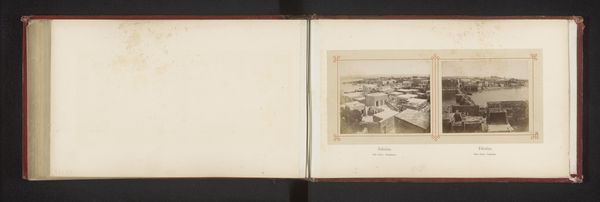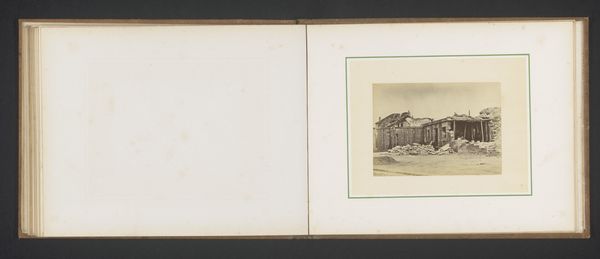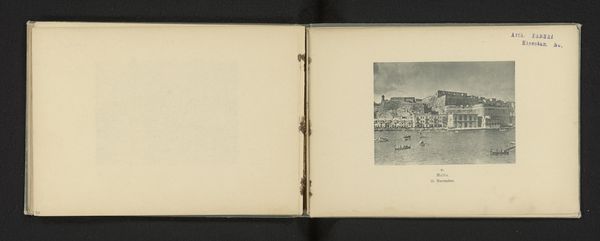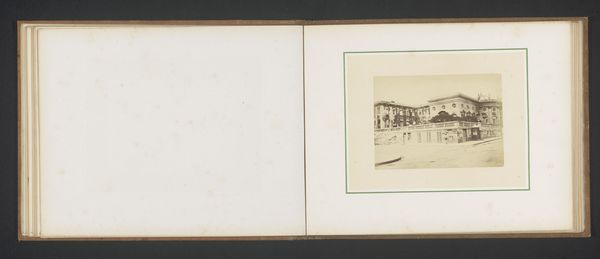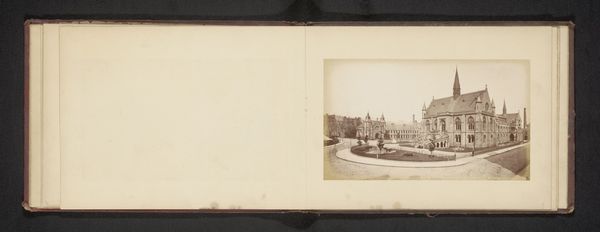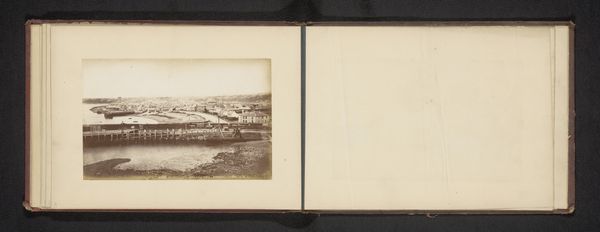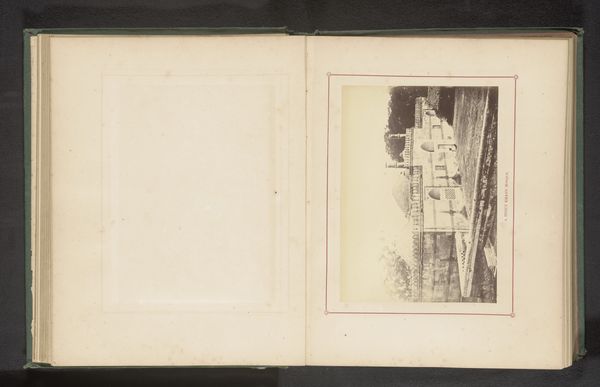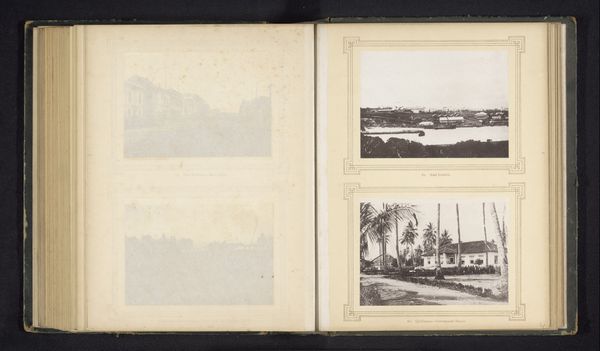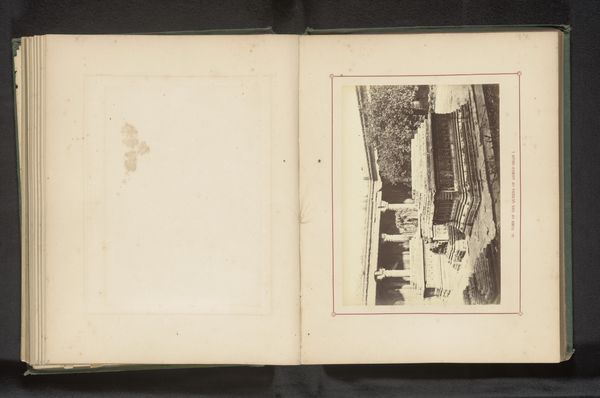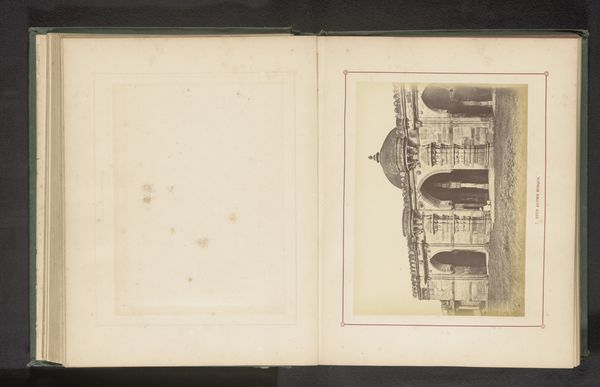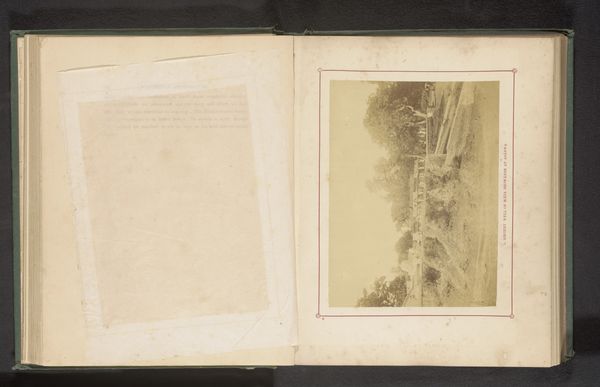
Dimensions: height 99 mm, width 140 mm
Copyright: Rijks Museum: Open Domain
Editor: This is "Gezicht op Hastings," taken before 1875 by Wm. E. Thorpe. It’s an albumen print in a photograph album. I find it fascinating how a photograph can feel so painterly and carefully constructed. What elements stand out to you, considering its composition? Curator: Indeed. Let us focus on the formal elements. Note how the albumen print gives a warm, sepia tone which evokes a sense of nostalgia. More interesting is the artist's use of linear perspective; see how the receding buildings and seawall guide the viewer's eye towards a vanishing point far in the distance? Thorpe uses line to delineate the planes, thereby generating the photographic illusion. Editor: That makes sense. It's like the buildings themselves are acting as leading lines, right? And what about the framing of the photograph within the album page, and the label "Hastings"? Curator: Precisely. The photograph's frame acts as a boundary, calling attention to the picture’s construction. The label identifies and neatly contains our gaze; there are few clues here to indicate a life or a history for the pictured citizens. How might the stark contrast between light and shadow play a role? Editor: The high contrast definitely creates depth and accentuates the architectural details! It’s almost theatrical, drawing our focus to the interplay between solid forms and negative space. I hadn't really noticed that before! Curator: Observe that this play of light and shadow transforms simple buildings into studies of texture and form, contributing to an aesthetic experience quite detached from any practical function of viewing a city scene. We are encouraged to contemplate form. Editor: Thank you, I find it remarkable how simply considering composition and light and shadow can reveal new dimensions. Curator: Formal analysis reveals its intentional artistry; photography then was still in dialogue with painting.
Comments
No comments
Be the first to comment and join the conversation on the ultimate creative platform.

